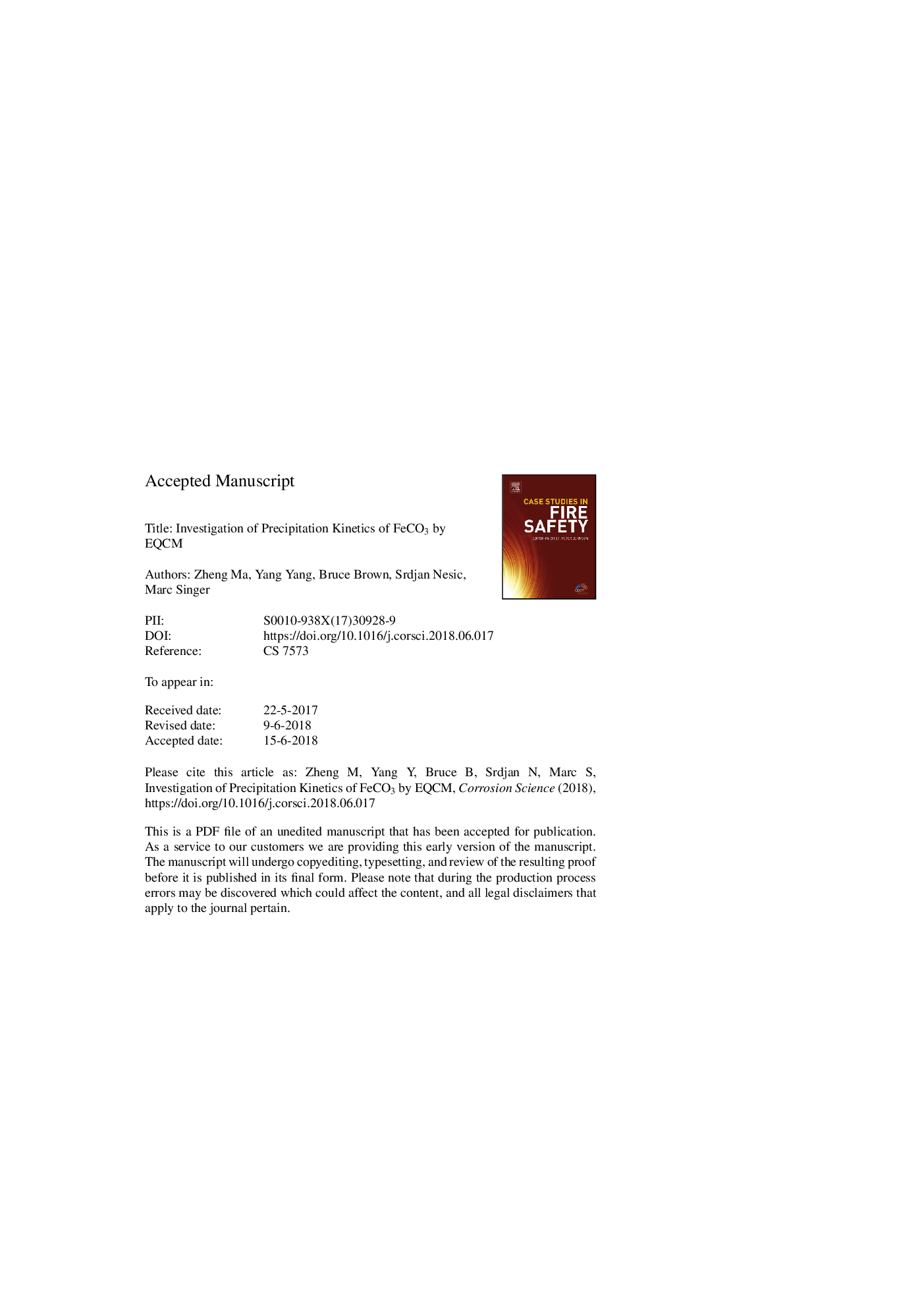| Article ID | Journal | Published Year | Pages | File Type |
|---|---|---|---|---|
| 7893143 | Corrosion Science | 2018 | 21 Pages |
Abstract
Iron carbonate (FeCO3) is the most common corrosion product in aqueous CO2 corrosion of mild steel. When it forms, the FeCO3 corrosion product layer may be protective, by serving as a diffusion barrier and by affecting the rate of electrochemical reactions at the surface. In the present study, an Electrochemical Quartz Crystal Microbalance (EQCM) was used to investigate the kinetics of precipitation of FeCO3 from an aqueous CO2 corrosion environment. EQCM is a technique providing very accurate in-situ measurement of surface mass change, enabling also simultaneous electrochemical measurements. Three different substrates were used to conduct the FeCO3 precipitation experiments: a cathodically polarized gold-coated quartz crystal, a freely corroding iron-coated quartz crystal and a cathodically polarized iron-coated quartz crystal, at varied temperatures (50-80â¯Â°C). Precipitation rates of FeCO3 obtained by using EQCM were repeatable and consistent across different substrates. The obtained precipitation rates were used to determine the theoretical kinetic constant and the activation energy, which was then compared with those reported in the Sun and Nesic model (2008). Discrepancies between the predicted and experimental values were noticed at lower saturation levels and improvements in the model are proposed.
Keywords
Related Topics
Physical Sciences and Engineering
Materials Science
Ceramics and Composites
Authors
Zheng Ma, Yang Yang, Bruce Brown, Srdjan Nesic, Marc Singer,
